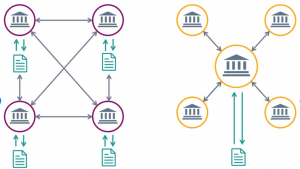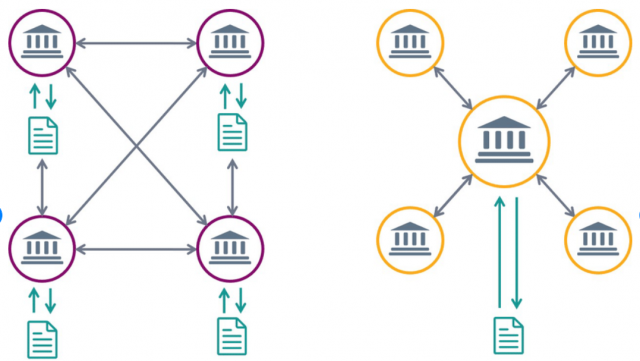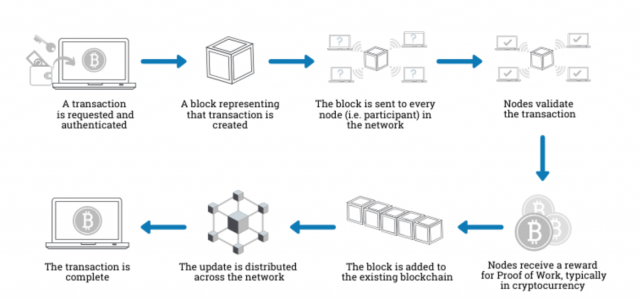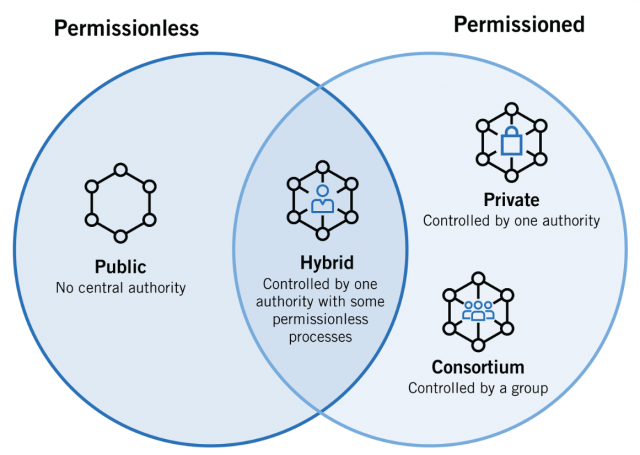
Blockchain is a distributed database that allows for secure, transparent, and tamper-proof transactions. It was first introduced in 2009 as the underlying technology behind Bitcoin. Blockchain has since garnered a great deal of attention due to its potential applications in a variety of industries. In this blog post, we will explore what blockchain is and how it works!
What is Blockchain?
Blockchain is a distributed database that allows for secure, transparent, and tamper-proof transactions. Blockchain was originally conceived as the underlying technology for the cryptocurrency bitcoin. However, Blockchain has since been found to have many other potential use cases. The key concepts behind Blockchain are decentralization, immutability, and consensus. Blockchain transactions are verified by a network of computers rather than a central authority, making it more resistant to fraud and tampering. The decentralized nature of Blockchain also makes it more secure, as there is no single point of failure. The picture below represents the decentralized aspect of Blockchain (left image) rather than the traditional way of storing the transactions (Centralized).
Blockchain records are immutable, meaning they cannot be altered or deleted, ensuring that transaction histories are complete and accurate. Finally, Blockchain networks reach a consensus on the valid state of the ledger through a process known as mining. Miners compete to solve complex mathematical problems in order to validate transactions and add new blocks to the chain. In return for their work, miners are rewarded with cryptocurrency.
The first and most well-known type of blockchain is the Bitcoin blockchain, which powers the Bitcoin cryptocurrency. However, there are many other types of blockchain that have been developed for different purposes. For example, Ethereum is a blockchain that can be used to create and run decentralized applications. Ripple is a blockchain that is designed for fast and efficient international payments. There are also private and permissioned blockchains, which are designed for use within specific organizations. Each type of blockchain has its own unique features and characteristics, but all share the same core concepts of decentralization, security, and transparency.
How does Blockchain work?
Now that we have a basic understanding of Blockchain, let’s take a look at how it works. Blockchain transactions are grouped into blocks, which are then chained together. Each block contains a cryptographic hash of the previous block, a timestamp, and transaction data. The chain is stored across a network of computers, known as nodes. In order for a transaction to be added to the Blockchain, it must be verified by the nodes in the network. Once verified, the transaction is added to a block, which is then broadcasted to the network. The new block is then added to the Blockchain and propagated across the network. Miners play an important role in this process, as they validate transactions and add new blocks to the Blockchain. In return for their work, miners are rewarded with cryptocurrency. The picture given below represents how does a transaction gets stored in the blockchain:
What are the different types of Blockchain?
The following are three different types of Blockchain:
- Public Blockchain: A public blockchain is a decentralized and distributed digital ledger that is used to record transactions across many computers so that the record cannot be altered retroactively without the alteration of all subsequent blocks and the collusion of the network. A public blockchain is a decentralized network where anyone can join and participate in the network. All transactions are publicly visible on the Blockchain and anyone can verify the accuracy of the transaction data. Public blockchains are secure by design and exemplify a distributed computing system with high Byzantine fault tolerance. Decentralized consensus has therefore been achieved with a public blockchain. Bitcoin and Ethereum are two examples of public blockchains. The main characteristic of public blockchains is that they are open to anyone and everyone can become a part of the network as there is no centralized entity governing it. In order to incentivize people to participate in maintaining the accuracy of the blockchain, public blockchains often offer rewards in the form of cryptocurrency tokens. Any person with an internet connection can set up a node in the public blockchain and start verifying transactions that take place in the network thereby participating in the consensus process. A public blockchain is also called permissionless blockchain.
- Private Blockchain: A private blockchain is a decentralized and distributed digital ledger that is used to record transactions across many computers so that the record cannot be altered retroactively without the alteration of all subsequent blocks and the collusion of the network. Unlike public blockchains, a private blockchain is a permissioned blockchain, meaning that only authorized individuals can join and participate in the network. Private blockchains are often used within organizations to streamline internal processes and transactions. Ripples’ Interledger Protocol (ILP) is an example of a private blockchain. The main characteristic of private blockchains is that they require an invitation or permission from the centralized entity in order to join the network as opposed to anyone with an internet connection being able to join public blockchains.
- Hybrid Blockchain: Hybrid blockchains are a type of blockchain that combines features of both permissioned and permissionless blockchains. Hybrid blockchains allow for both public and private transactions, giving users the ability to choose which type of transaction they would like to make. For example, a user may want to make a public transaction, such as transferring funds to another user, while keeping their personal information, such as their account balance, private. Hybrid blockchains provide the best of both worlds, giving users the flexibility to choose which type of transaction they would like to make. Hybrid blockchains offer the best of both worlds: the security of a permissioned blockchain with the transparency of a permissionless blockchain.
The picture below represents different types of blockchains including public, private, and hybrid blockchain.
What are some of the frameworks for getting started with Blockchain development?
There are many blockchain frameworks available that can be used for blockchain development. Some of the most popular blockchain frameworks include Hyperledger Fabric, Ethereum, Corda, and Multichain. Each blockchain framework has its own set of features and benefits. The following is the detail:
- Hyperledger Fabric: Hyperledger Fabric is a blockchain framework that is optimally suited for developing applications or solutions with a permissioned blockchain network. Hyperledger Fabric leverages container technology to host smart contracts called “chaincode” that comprise the application logic of the system. Hyperledger Fabric is contributed by IBM and Digital Asset. The modular architecture of Hyperledger Fabric allows components, such as consensus and membership services, to be plug-and-play. This design philosophy enables an exceedingly flexible system where components can be swapped out and upgraded with minimal impact on the network or application. Examples of Hyperledger Fabric in action include trade finance, identity management, and supply chain applications.
- Ethereum: Ethereum is a blockchain framework that enables the development of decentralized applications (dApps). Ethereum is a public, open-source platform that uses smart contracts to facilitate transactions. Ethereum was proposed in 2013 by Vitalik Buterin, and the Ethereum network went live in 2015. Ethereum has gained popularity due to its ability to execute smart contracts. Smart contracts are programs that automatically execute actions when certain conditions are met. Ethereum’s popularity has also been bolstered by the rise of initial coin offerings (ICOs). ICOs are a way for startups to raise funds by issuing tokens on the Ethereum network. Ethereum has spurred the development of a whole ecosystem of dApps and blockchain-based projects. Some popular examples of Ethereum-based projects include Augur, Golem, and Maker.
- Corda: Corda is a blockchain framework that enables the development of applications for business transactions. Corda was designed to meet the needs of financial institutions and other regulated industries. Corda allows developers to create CorDapps, which are applications that run on the Corda platform. One of the key features of Corda is its flexibility; it can be used to develop a wide range of applications, from simple payment apps to complex financial contracts. Another key feature of Corda is its privacy; transactions on the Corda network are only visible to the parties involved in the transaction. This makes Corda an ideal platform for developing applications that require compliance with data privacy regulations.
- Multichain: Multichain is an open-source blockchain platform that enables the creation of private, permissioned blockchain networks. Multichain is available as both a free community edition and a paid enterprise edition. Multichain provides a number of features that make it well-suited for developing applications in regulated industries, such as banking and healthcare. These features include data privacy, granular access control, and support for multiple consensus algorithms. Multichain also offers an easy-to-use graphical user interface (GUI) that can be used to manage blockchain networks and transactions.
The above-mentioned frameworks are just a few examples of blockchain frameworks that can be used for developing blockchain applications. The best way to determine which blockchain framework is right for a particular project is to consult with a blockchain development expert.
What are the skills required to work on Blockchain projects?
Blockchain is a rapidly emerging technology with the potential to revolutionize a wide range of industries. While Blockchain holds great promise, it also presents a unique set of challenges. As a result, Blockchain projects often require a specific set of skills and expertise.
First and foremost, Blockchain projects require individuals with a strong foundation in mathematics and computer science. This is essential for understanding how Blockchain works and for developing new applications. In addition, Blockchain projects often require experience with distributed systems and distributed ledger technologies. Individuals with this expertise can help to ensure that Blockchain projects are secure and efficient. Finally, Blockchain projects often involve complex financial transactions. As a result, individuals with experience in finance and accounting can be extremely valuable to Blockchain teams.
Summary
Blockchain is an emerging and promising technology. The blockchain framework can be used for developing blockchain applications that are secure, transparent, and tamper-proof. Blockchain frameworks vary in their features but the most important feature to look out for when choosing a framework is its scalability – since transactions on Blockchain will increase over time with more users joining the network, it’s essential that your chosen Blockchain has enough nodes available so as not to congest or slow down the system due to lack of bandwidth capabilities. We hope this article helped you understand what Blockchain really means and how it works! If you have any questions about Blockchain development feel free to drop a message below and I will reach out to you.
- Three Approaches to Creating AI Agents: Code Examples - June 27, 2025
- What is Embodied AI? Explained with Examples - May 11, 2025
- Retrieval Augmented Generation (RAG) & LLM: Examples - February 15, 2025



I found it very helpful. However the differences are not too understandable for me